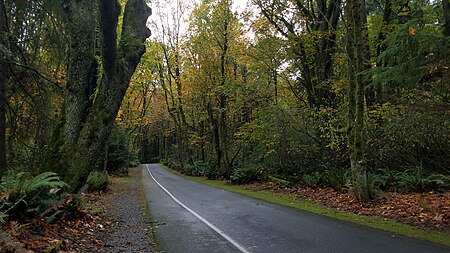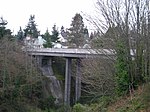Point Defiance Park
1888 establishments in Washington TerritoryJapanese gardens in the United StatesNorth Tacoma, WashingtonParks in Pierce County, WashingtonPoint Defiance ... and 3 more
Protected areas established in 1888Regional parks in the United StatesTourist attractions in Tacoma, Washington

Point Defiance Park in Tacoma, Washington, United States, is a large urban park. The 760-acre (3.1 km2) park includes Point Defiance Zoo & Aquarium, the Rose Garden, Rhododendron Garden, beaches, trails, a boardwalk, a boathouse, a Washington State Ferries ferry dock for the Point Defiance-Tahlequah route to Vashon Island, Fort Nisqually, an off-leash dog park, and most notably about 400 acres of old-growth forest. It receives more than three million visitors every year. Point Defiance Park is maintained and operated by Metro Parks Tacoma.
Excerpt from the Wikipedia article Point Defiance Park (License: CC BY-SA 3.0, Authors, Images).Point Defiance Park
Five Mile Road, Tacoma
Geographical coordinates (GPS) Address Nearby Places Show on map
Geographical coordinates (GPS)
| Latitude | Longitude |
|---|---|
| N 47.31 ° | E -122.53 ° |
Address
Five Mile Road
Five Mile Road
98407 Tacoma
Washington, United States
Open on Google Maps









